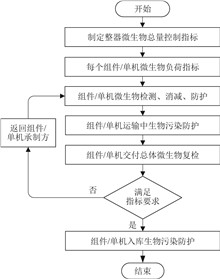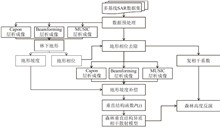In the exploration activities of target celestial bodies that may contain life,it is necessary not only to meet the requirements of planetary protection policies that have been established both domestically and internationally,but also to find the optimal balance among the engineering development progress,cost,and scientific resarch effectiveness.In this paper,the compatibility of the development process of existing deep space exploration missions and various planetary protection tasks are studied.Taking the strictest V-class restricted return mission as an example,the advancement process of five stages for the planetary protection work is sorted out,and the key measures are identified.The results show that there is a strong coupling relationship between the high-grade planetary protection work and the development of spacecrafts,which will seriously slow down the entire engineering development schedule and increase the engineering development cost.To achieve a better balance among the schedule,cost,and effectiveness and avoid the occurrence of cross biological pollution events between the target celestial bodies and the Earth,the entry point of the planetary protection work in the development of deep space exploration missions should be reasonably planned,and the key technologies for planetary protection should be improved and optimized.
With the increasing frequency of human space activities,the quantity of space debris is growing rapidly,and the space debris issue is becoming increasingly prominent,which poses significant threats to the long-term safe and reliable operation of spacecraft,especially to the large manned spacecraft such as space stations.In this paper,the space debris threats faced by space stations and their potential hazards are systematically evaluated.In view of the design specifications and operational parameters of China Space Station (CSS) in orbit,the existing space debris handling capabilities are analyzed,and the vulnerabilities under the progressively worsening space debris environment are identified.Based on the analysis,several enhancement strategies for the space debris handling capabilities of CSS are proposed from four critical dimensions,i.e.,identification,protection,impact detection,and post-impact recovery.The feasibility and technical pathways of these strategies are thoroughly analyzed,and some strategic recommendations for the future implementation are put forward.
The forest vertical structure heterogeneity (FVSH) model constructs a forest vertical structure function using tomographic spectra obtained from tomographic synthetic aperture radar(TomoSAR),and can accurately describe the forestvertical structure.The accuracy of polarimetric interferometric synthetic aperture radar (PolInSAR) forest height inversion is closely related to the coherent scattering model.Optimizing the forest vertical structure function with tomographic spectra can improve the inversion accuracy.In this paper,the heterogeneous coherent scattering models constructed from different vertical structure tomography spectra are comparatively analyzed,and the optimized forest vertical structure function and the forest height inversion results of the coherent scattering modelare analyzed.Tests on an airborne P-band fully polarizedsynthetic aperture radar (SAR) dataset covering tropical rainforests in French Guiana are carried out.The results show that themultiple signal classification (MUSIC) algorithm outperforms the Beamforming and Capon algorithms in optimizing forest vertical structure functions and retrieving forest heights based on coherent scattering models.This study is of great significance for the forestry application of domestically produced P-band SAR satellites.










